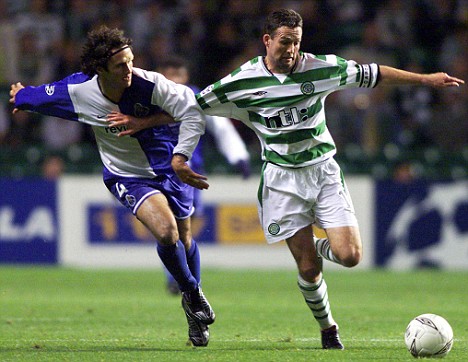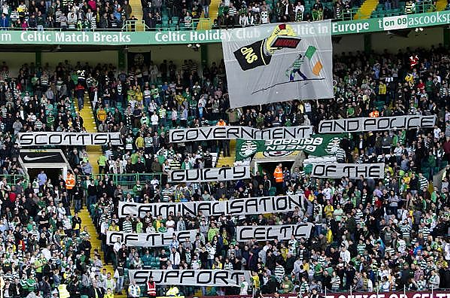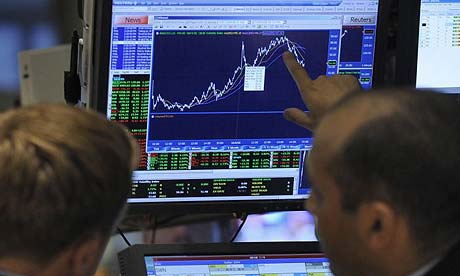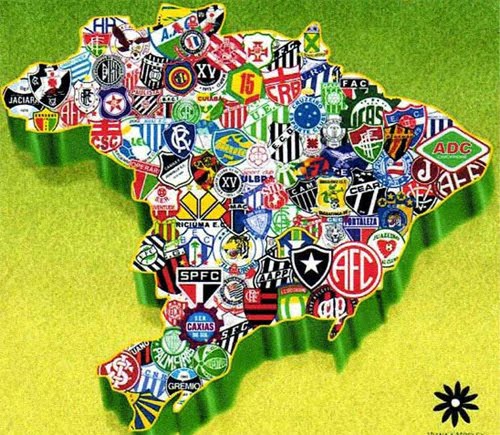Celtic and Porto share some obvious similarities; both are large clubs within domestic leagues that receive small media revenues that are dwarfed by larger neighbours whose leagues receive global media attention. Therefore Porto can be used as a valuable means to compare Celtic’s financial and sporting results. The contrasting strategies that have brought about these results shall be examined and conclusions drawn.
RELATIVE SPORTING PERFORMANCE – CELTIC AND PORTO
Table 1: Footballing Success
CELTIC PORTO
2000/1
Domestic 1st 2nd
European UEFA Cup 2nd Round UEFA Cup Quarter Finals
2001/2
Domestic 1st 3rd
European CL 1st Group Stage/UEFA Cup 3rd Round CL 2nd Group Stage
2002/3
Domestic 2nd 1st
European UEFA Cup Final UEFA Cup Winners
2003/4
Domestic 1st 1st
European CL Group Stage/UEFA Cup Quarter Finals Champions League Winners
2004/5
Domestic 2nd 2nd
European CL Group Stage CL Round of 16 Knockout Phase
2005/6
Domestic 1st 1st
European CL 2nd Qualification Round CL Group Stage
2006/7
Domestic 1st 1st
European CL Round of 16 Knockout Phase CL Round of 16 Knockout Phase
2007/8
Domestic 1st 1st
European CL Round of 16 Knockout Phase CL Round of 16 Knockout Phase
2008/9
Domestic 2nd 1st
European CL Group Stage CL Quarter Finals
2009/10
Domestic 2nd 3rd
European CL 4th Qualification Round/UEFA Group Stage CL Round of 16 Knockout Phase
2010/11
Domestic 2nd 1st
European CL 3rd Qualification Round/EL Play-off Europa League Winners
Domestically both Celtic and Porto have been the most dominant clubs in their domestic leagues with 6 and 7 titles respectively over the past 11 seasons. However, it is performance in European competition that provides a better gauge of the standard of the team. Here Porto has a distinct advantage.
In the 21st Century, Porto has outperformed Celtic in European competition on no less than 8 of the past 11 seasons. Celtic have reached a stage further than Porto in just one season during this period and on two occasions both clubs were knocked out at the same Round of 16 Phase of the Champions League (in seasons 2006/7 and 2007/8).
Furthermore, since the turn of the millennium Porto have won four international trophies; the UEFA Cup in 2002/3, the Champions League in 2003/4, the World Club Cup in 2004/5 and the Europa League earlier this year. Their international success dispels the myth that it is impossible for a club that does not compete in a major European league to be successful in European competition.
FINANCIAL STRENGTH – CELTIC AND PORTO
Has this been achieved because of their greater financial resources? The answer is no.
Both clubs provide annual financial reports on their club websites and these results for turnover have been reproduced below. The Porto financial figures have been converted from Euros into Pound Sterling using the exchange rate on the 30th June of each particular year, as this is frequently the date when their annual financial reports are published.
Table 2: Annual Financial Report
Year of Report Turnover (excluding player trading) Profit/(Loss)
Celtic Porto Celtic Porto
2005 £62.2m £31.2m* (£3.7m) £0.7m
2006 £57.4m £31.9m (£4.2m) (£21.1m)
2007 £75.2m £37m £15m £1.6m
2008 £72.6m £43.5m £4.4m £6.3m
2009 £72.6m £58m £2m £4.3m
2010 £61.7m £47.3m (£2.1m) £0.1m
*The 2006 Annual Report provides two different sets of results for the year 2005. Those shown above are in accordance with International Financial Reporting Standards (IFRS). The second set of results provided in the 2006 Annual Financial Report that are not shown in the table above are in accordance with Portuguese ‘Generally Accepted Accounting Principles’ (GAAP), however these results differ substantially from the results in all prior Annual Reports with respect to calculating amortisation and depreciation.
**Unfortunately the Porto’s Annual Financial Reports published online for 2003 and 2004 respectively do not provide consolidated profit and loss accounts, otherwise these results would also have been shown above
As can be observed, Celtic’s turnover has been greater than Porto’s every year for the previous six years. Indeed, the annual reports of 2005 and 2007 show that Celtic’s turnover was approximately double that of the Portuguese club. The Annual Financial Reports from 2005-2010 show that the cumulative turnover of Porto is less than 61% of that of Celtic. Over this period Celtic have made an accumulated profit of £11.4m, whereas Porto have made a loss of £8m.
Regarding the first two tables shown, there seems to be a disconnect between Celtic consistently having a significantly larger turnover than Porto, yet Porto consistently outperforming them in European competitions. Of course, a club’s turnover will not necessarily indicate the amount actually invested on the playing side. It has been known for clubs to spend more than 100% of their turnover in order to have short-term, if not sustainable success. It is therefore essential to analyse the annual wage expenditure of both clubs.
Table 3: Annual Wage Costs
Celtic Porto
2004 £40.5m £28.4m
2005 £37.4m £26.9m
2006 £32.5m £24m
2007 £36.4m £22.9m
2008 £39m £30.6m
2009 £38.8m £40.5m
2010 £36.5m £32.3m
Similar to Table 2 which shows Celtic with significantly higher turnover than Porto, the above table shows that Celtic consistently spend more on wages. In the past 7 years, only once has Porto had higher wage costs (in 2009) and this was by a small amount, just £2m. In 2004, the season that Porto won the Champions League, Celtic’s expenditure on staff costs was more than £12m above Porto’s i.e. more than 40% higher. From the table above it is apparent than Celtic’s wage bill has decreased since 2004, yet even in 2010 the wage bill was £6m more than Porto’s in their Champions League winning season.
If Celtic’s turnover and wage costs are significantly greater than Porto’s-how then can the Portuguese club produce playing teams that are consistently better than Celtic’s? The answer seems to lie in player recruitment. Using a German football database that records player transfers across Europe, the figures for transfer expenditure and income for both Celtic and Porto have been reproduced below. The figures remain in Euros and have not been converted into Pound Sterling as the conversion of every transfer(both incoming and outgoing) for both clubs using the correct conversion rates for those dates of transfer, would have been overly complicated.
Table 4: Transfers
Transfer Spend Transfer Income Transfer Net
Celtic Porto Celtic Porto Celtic Porto
2000/01 €31.2m €3.9m €10.7m €16m -€20.5m €12.1m
2001/02 €12.2m €8.1m €2.5m €0 -€9.7m -€8.1m
2002/03 €6m €11.4m €0 €17.8m -€6m €6.4m
2003/04 €0.5m €14.7m €2.3m €10.4m €1.8m -€4.3m
2004/05 €0 €40.4m €0 €100.3m €0 €59.9m
2005/06 €12.5m €22.8m €1.5m €45.3m -€11m €22.5m
2006/07 €16.4m €6.4m €16.7m €10.8m €0.3m €4.4m
2007/08 €17.1m €17.6m €8m €71.4m -€9.1m €53.7m
2008/09 €11.5m €46.7m €1m €54.9m -€10.5m €8.3m
2009/10 €15.3m €29.7m €10.5m €71.7m -€4.8m €42m
2010/11 €12.2m €34.3m €20.6m €39.8m €8.4m €5.5m
2011/12 €3.5m €37.5m €1.1m €45.3m -€2.4m €7.8m
TOTAL €138.4m €273.4m €74.8m €483.6m -€63.5m €210.2m
Source: Transfermarkt
TRANSFER POLICY AND ASSET MANAGEMENT – CELTIC AND PORTO
Despite having a significantly lower turnover than Celtic, Porto has spent twice as much as Celtic on transfer fees over the last 12 seasons. However, the crucial part of their whole business model is player sales. They may spend double Celtic’s transfer outlay, but importantly they recoup more than 6 times that of Celtic with regards to transfer income.
As can be seen in the table above, Porto have received a remarkable €483.6m in transfer sales over this period and have made an overall net profit on transfers of €210.2m compared to Celtic’s loss of €63.5m over the same period. Porto seem to approximately double their money with regards to player recruitment and the re-sales of these players, whereas Celtic’s signings halve in value by the time they leave the club.
A worrying concern for Celtic supporters and shareholders will be the incongruity of Celtic spending half as much as Porto on transfer fees, yet consistently having higher staff salary costs. Celtic may purchase players that are less valuable in the transfer market, yet these same players are commanding significantly higher wages than players deemed to be of a greater value, signed by Porto.
To understand why this is the case, it is necessary to analyse which markets both clubs recruit their players from. Using the German football database ‘transfermarkt’, the cost of every transfer, both incoming and outgoing has been recorded since 2000. The cost of transfers and the subsequent sales of these same players has been analysed and as a consequence it is possible to determine and measure the profitably of these markets for both Celtic and Porto.
Table 5a: Celtic’s transfer spend in markets and subsequent re-sale value from 2000-2011
Transfer Spend in Market Transfer Resale Income Transfer Net Resale Value
England €46.9m €5m -€41.9 10.6%
Scotland €12.4m €8m -€4.4m 64.9%
Continental €36.9m €8.7m -€28.2m 23.6%
Europe*
*Transfers from Spanish, Italian, French, Dutch and Polish leagues
Table 5b: Porto’s transfer spend in markets and subsequent re-sale value from 2000-2011
Transfer Spend in Market Transfer Resale Income Transfer Net Resale Value
Portugal €22m €134.6m €112.6m 613.2%
Brazil €28m €65.5m €37.5m 233.9%
Argentina €33.7m €89m €55.4m 264.5%
Europe* €43.3m €22.2m -€21.1m 51.2%
(excluding
Portugal)
*Transfers from Spanish, Italian, English, Greek, Turkish, Polish, Dutch and Hungarian leagues
In cases where less than 5 players have been bought from a particular nation, the market will be referred to in terms of its region. In cases where even the region (from which players have been bought) has less than 5 players, those results have been excluded. The markets have been placed in order of the highest number of players bought from a particular market.
Note that these figures do not include the sales of players developed by the club’s themselves or players bought prior to 2000, nor does it include players that were signed as free transfers as these players were not purchased from a particular nation’s market.
As can be observed from Table 5, the English market has been woeful for Celtic in terms of transfer spend and the sale income recouped from those same players. Losing 90% of the value of such a significant investment should be alarming for any business-especially so as the club invests more in this market than any other. When dealing in their domestic market in Scotland, Celtic fare far better economically yet they still lose more than a third of the value of these players when they are sold-the purchases are comparatively low-cost but are sold on for even less.
The figures for continental Europe are poor; with players losing three-quarters of their value by the time they leave the club. However, there is a danger in overanalysing the figures for Europe, as they are collected from a variety of European markets that may differ greatly. For example the markets in Spain and Italy may be quite distinct to that of Poland.
 The huge profits from transfer dealings that Porto receive can be attributed to three main markets; Portugal, Brazil and Argentina. When selling players bought from the Brazilian and Argentinian markets, the players on average more than double in value. An example of a successful and profitable signing for Porto was Radamel Falcao from River Plate for €5.4m in 2009. He played for 2 seasons, scored 72 goals in 85 appearances and helped win them two domestic titles and the Europa League before selling him in the summer of 2011 for €40m.
The huge profits from transfer dealings that Porto receive can be attributed to three main markets; Portugal, Brazil and Argentina. When selling players bought from the Brazilian and Argentinian markets, the players on average more than double in value. An example of a successful and profitable signing for Porto was Radamel Falcao from River Plate for €5.4m in 2009. He played for 2 seasons, scored 72 goals in 85 appearances and helped win them two domestic titles and the Europa League before selling him in the summer of 2011 for €40m.
Porto’s domestic market has been their most profitable source of transfer income with these players becoming six times more valuable by the time they leave the club. This indicates that not only are other Portuguese clubs are grossly undervaluing their players, but the figures are also a testament to the influence and exposure of the Champions League. Perhaps the best example of Porto profiting from their domestic market is the case of Aly Cissokho. They bought the Vitoria Setubal left back in January 2009 for €300,000. He played just 22 times for Porto, including 4 Champions League appearances and was promptly sold 6 months later for €15m.
Interestingly, when Porto have looked towards other European markets, like Celtic, they have experienced large losses in the value of their players. Indeed, on the two occasions that Porto have purchased players from the English market, their value has plummeted by more than two-thirds. Significantly they have not signed a player from England in more than 7 years.
Perhaps Celtic too are taking note of the poor return on players signed from the English market. In the past year, the club have signed players from a variety of markets, including Honduras, Israel, Belgium, Sweden and Mexico amongst others, with mixed success. One would assume that the values of Kayal, Izaguirre and Hooper have increased since joining Celtic, however it also has to be acknowledged that within the last 18 months more than €8.5m has been spent on Hooiveld, Rasmussen, Juarez and Murphy, all of whom have been surplus to requirements and have subsequently been loaned to other clubs. Their combined value will surely be lower now than at the time of purchase. Of course, not every investment in the playing staff will be successful, but in comparison to Porto, Celtic’s player recruitment over the past decade or so can at best be described as ‘hit and miss’. Furthermore, none of the markets that are consistently used by the club have been profitable.
The three main markets that Porto utilise (Portugal, Argentina and Brazil) have not been used once by Celtic in the past 12 years. It seems perplexing that Celtic should neglect these markets that not only have provided huge profits for Porto, but also provide high quality players for Porto and clubs throughout European football. It was far easier to peddle the myth that South American footballers would not settle in British football when there were almost no instances of them playing there. Now though, their presence and expertise is inescapable as Javier Hernandez, Carlos Tevez, Luis Suarez, Sergio Aguero et al demonstrate that they can comfortably adapt to living and playing in Great Britain. It is often remarked that clubs in countries such as Portugal, Holland and Belgium have an advantage in obtaining non-EU players due to the their rules on immigration. However, this ignores the increasingly lax entry system for footballers in Britain that allows for innumerable players to receive work permit that do not come close to satisfying the official Home Office criteria. The fact that Celtic themselves have been able to secure work permits for the likes of Du Wei, Koki Mizuno, Ki Sung Yeung and Victor Wanyama in recent years makes it even more baffling that they are not purchasing players from South America.
 Porto obtain their players from markets that have been shown to be far more profitable than those used by Celtic, but also importantly the Portuguese club have a far superior level of asset management. Porto frequently sell their best assets when they are at a high value. With reference to the two playing squads that played in the 2003 UEFA Cup final, Celtic received a transfer fee for just one player that started that fixture; Stilian Petrov, who was sold for €10m. In contrast, Porto received fees for 9 of their starting eleven, totalling more than €100m. From Table 4, it can be noted that Celtic invested more than €40m in the playing staff for the two years prior to the final. It was this outlay that was to provide Celtic with improved sporting results both domestically and in Europe. However, this surge of investment seems flawed and the success unsustainable when such expenditure is not aligned to an intention to recoup transfer fees and re-invest in the playing squad. That so many of the playing staff were allowed to run out their contracts and leave without the club receiving a fee reflects badly on the asset management of the club.
Porto obtain their players from markets that have been shown to be far more profitable than those used by Celtic, but also importantly the Portuguese club have a far superior level of asset management. Porto frequently sell their best assets when they are at a high value. With reference to the two playing squads that played in the 2003 UEFA Cup final, Celtic received a transfer fee for just one player that started that fixture; Stilian Petrov, who was sold for €10m. In contrast, Porto received fees for 9 of their starting eleven, totalling more than €100m. From Table 4, it can be noted that Celtic invested more than €40m in the playing staff for the two years prior to the final. It was this outlay that was to provide Celtic with improved sporting results both domestically and in Europe. However, this surge of investment seems flawed and the success unsustainable when such expenditure is not aligned to an intention to recoup transfer fees and re-invest in the playing squad. That so many of the playing staff were allowed to run out their contracts and leave without the club receiving a fee reflects badly on the asset management of the club.
Worryingly for Celtic supporters and shareholders, poor asset management appears to be a consistent theme in the past decade. In the years following the UEFA Cup final in Seville, players such as Liam Miller, Jan Vennegoor of Hesselink, Thomas Gravesen and Shunsake Nakamura amongst others have left Celtic without the club receiving a fee, all of whom would have commanded significant transfer income for the club shortly before, when under contract. At the time of writing, club captain Scott Brown is expected to sign a new contract for Celtic, however, it is not implausible that he could wait for three months until the January transfer window when he will be able to sign a pre-contract agreement with another club. It could be yet another example of Celtic receiving no transfer fee for a previously valuable asset. Effective asset management dictates that Celtic should be selling their players when they have at least 18 months remaining on their contract in order to recoup the maximum transfer value of their asset.
This approach contrasts with Porto who have a very coherent transfer and asset management policy that has been very successful and remains regardless of the manager of the playing squad. The vast majority of their players are bought from the three aforementioned markets; Portugal, Argentina and Brazil. The Portuguese club purchase them at a young age, evidenced by the fact that for the past 4 years they have not paid out a transfer fee for any player over the age of 24. By purchasing players from Portugal and South America, Porto obtain high quality players that demand far lower wages than the players obtained from the markets that Celtic use. Porto use and develop the player, but always with the clear intention to sell when the player’s value is high. The Portuguese club have positioned themselves as a ‘gateway club’ for young talented South American players. It is a mutually beneficial exhange-the players get the opportunity to play in the Champions League and use it as a shop window to get a subsequent move to a major European league and Porto obtain high quality young footballers on comparatively low wages. The footballing and financial success of this policy is evidenced in Tables 1 and 4.
Whereas Porto have had a coherent and consistent transfer strategy over the past decade, it is difficult to attribute such a plan to Celtic. At least from the outside, any such transfer policy (if there is one) seems to change from manager to manager. From focussing almost exclusively on the British markets from 2000-2005, Celtic now purchases players from a wide variety of leagues. It may be claimed then, that Celtic are finally (if slowly) arriving to the conclusion that they need to focus their player recruitment on more profitable markets. However, statements from the chief executive regarding the resale value of players and the subsequent reinvestment of that transfer income seem at odds with acknowledged interest from the club in ageing players from the English market such as David James, Jimmy Bullard, Sol Campbell and Craig Bellamy (and the signing of Frederik Ljungberg), all of whom would have commanded large wages with little or no future re-sale value.
The past decade will surely be described as the golden era of FC Porto. They have been dominant in their domestic league and have achieved remarkable success in winning 4 international competitions, including the Champions League. The basis of this success has been their superb player recruitment and asset management policies that has enabled them to earn almost half a billion euros this decade in player sales, allowing them to reinvest and obtain high quality players maintaining their competitive level.
CONCLUSION
Whilst this analysis may induce pessimism within the Celtic support, it could be argued that the example of Porto can provide Celtic with a great deal of hope. If Celtic with their greater financial resources were to effectively adopt Porto’s player recruitment and asset management policy it could push the Glasgow club into the European elite. Celtic has the potential to be even more successful than the Portuguese club, however it may need to alter its mindset.
Another factor that offers Celtic even more potential is its proximity to the English market – the biggest spenders in Europe. Instead of Celtic lamenting themselves as the poor relations of their English neighbours, perhaps they should be embracing their situation. Within the Scottish league, Celtic can have regular access to the Champions League where they can showcase their players to English customers who are aware that these players have already undergone a cultural and playing adaptation to Britain. Of all the clubs out-with the major European leagues, Celtic with their resources and proximity to the richest league in the world, is in an enviable position to take advantage of selling their players to the English market.
There is a symbiotic relationship between sporting and financial results. By observing the sporting and transfer income success of a much smaller club in FC Porto, Celtic supporters and shareholders should demand improvement in player recruitment and asset management in order that Celtic can reach its huge potential. As Porto stated at the beginning of their golden era in their 2003 Annual Financial Report, ‘The policy of equipping the team with high-quality athletes has not only provided excellent sporting results, but has also resulted in improving the potential of most of the company’s sources of income, particularly the growth of receipts of transfers; an essential factor for the financial equilibrium of the company.’
Celtic should take note.





